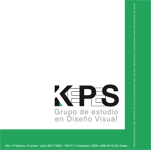Authors
Abstract
This text presents the work carried out in the research project Digital material and artistic creation, projecting the conceptual model for digital material in creation and cultural production. This concept is understood here as an analysis tool for the relationship between creative practice and digital systems.
The different relational configurations between creation, digital systems and the conceptualization of their processes are analyzed in four case studies to identify their convergence and variability on their operations. These relationships and the model projected from them allow analyzing the creative processes from a technologically informed position and surpassing the aesthetic judgment of their sensitive interfaces.
The result of the research is a model of analysis that, when implemented, has allowed the study of the creation strategies and methodologies in the four case studies, being useful to register its inherent relation with digital ontology. The proposed concept acts as a flexible bellows that adjusts its variables and modules to the particular task of each creator.
References
Ascott, R. (2007). The Cybernetic Stance: My Process and Purpose. Leonardo, 40(2), 189–197.
Broeckmann, A. et al. Is Software Art a Genuine Artistic Material? Artnodes, 2 (2002).
Cramer, F. (2003). Digital Code and Literary Text.
Cramer, F. (2003). Exe.cut[up]able Statements: The Insistence of Code.
Cramer, F.. (2006). Language.
Flusser, V. (2002). Writings. University of Minnesota Press.
Gutiérrez, E. (2015). El carácter documental del arte en la obra de Andrés Burbano. ArtNexus, (143), 60–65.
Gutiérrez, E. (2016). Material digital y creación artística. (Tesis Meritoria, Doctorado en Arte y Arquitectura). Universidad Nacional de Colombia.
Kay, A. (1984). Computer Software. Scientific American 251, (3), 52-59. Kay, A.. (1977). Personal Dynamic Media. The New Media Reader. N.p.
Knuth, D.E. (1974). Computer Programming as an Art. Commun. ACM 17.12: 667–673.
Manovich, L. (1999). Avant-Garde as Software. N.p.
Manovich, L. ( (2002). The Language of New Media. Reprint edition. Cambridge,Mass.: The MIT Press.
Lévy, P. (2007). Cibercultura: Informe al Consejo de Europa. Barcelona; México, D.F.: Anthropos Editorial; Universidad Autónoma Metropolitana.
Lévy, P. (1999). ¿Qué es lo virtual? Barcelona; Buenos Aires; México: Paidós.
Stocker, G. (2014). CODE – The Language of Our Time. Ars electronica blog.

 pdf (Español (España))
pdf (Español (España))
 FLIP
FLIP






















